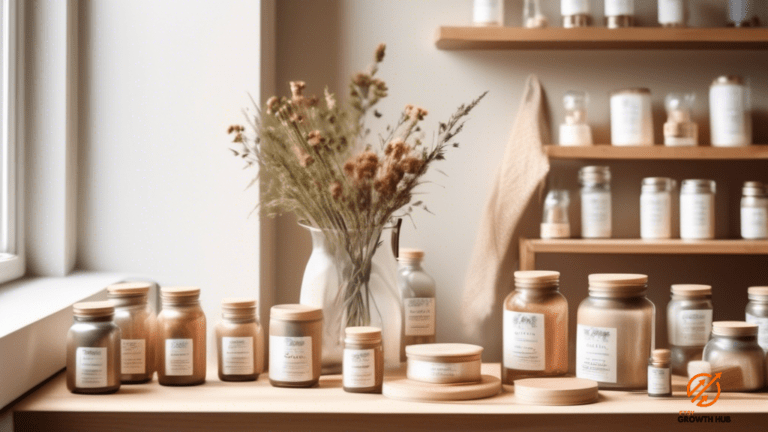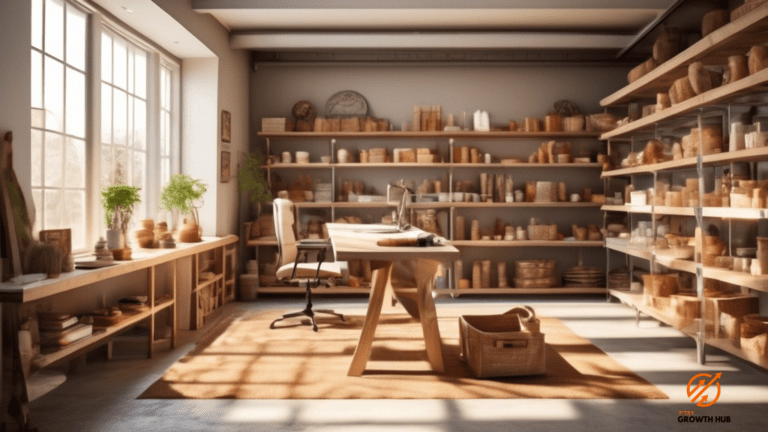Are you a budding photographer looking to capture stunning product shots that will leave your audience in awe? Well, you’ve come to the right place!
In this article, we will delve into the world of product photography and explore the do’s and don’ts that can make or break your images. From lighting tips to composition techniques, we will equip you with the knowledge to avoid common mistakes and elevate your product photography game to new heights.
First things first, let’s shed some light on the importance of lighting in product photography. Lighting is the key ingredient that can transform an ordinary image into a mesmerizing masterpiece. It sets the mood, highlights the product’s features, and creates depth and dimension. So, don’t underestimate the power of good lighting! We will explore different lighting techniques and tricks to ensure that your product photos shine with brilliance. From natural light to artificial light sources, we will guide you on how to harness the power of light to produce jaw-dropping visuals.
Now that we’ve enlightened you on the significance of lighting, let’s move on to choosing the right background for your product photography. The background plays a vital role in showcasing your product and enhancing its appeal. Whether you opt for a clean and minimalist background or a vibrant and textured one, your choice can make a world of difference. We will share tips on selecting the perfect background that complements your product and creates a harmonious composition.
So, get ready to elevate your product photography skills and captivate your audience with stunning visuals that leave a lasting impression.
Lighting Tips for Perfect Product Photos
Now that you know the importance of lighting in product photography, let’s dive into some do’s and don’ts to ensure you capture the perfect product photos!
First, do invest in a good quality light source. Natural light is often the best option, so try to shoot near a window or outdoors if possible. However, if you’re shooting indoors or in a low-light setting, consider investing in a professional lighting setup. This will help eliminate shadows and create a well-lit environment for your products.
Next, don’t rely solely on your camera’s flash. While it may seem convenient, the built-in flash can create harsh and unflattering lighting. Instead, experiment with different lighting angles and positions to find the most flattering and balanced light for your products.
Additionally, do use diffusers or reflectors to soften the light and reduce harsh shadows. These simple tools can make a big difference in the overall quality of your product photos.
In conclusion, proper lighting is essential for capturing stunning product photos. By following these do’s and don’ts, you’ll be well on your way to creating professional-looking images that showcase your products in the best possible light.
Choosing the Right Background for Product Photography
To create captivating product images, envision the perfect background that complements your item and draws viewers into the scene. The background you choose can make a significant difference in the overall impact of your product photos.
Consider the colors, textures, and patterns that will best showcase your product. For example, if you’re photographing a vibrant and colorful item, a plain white background can make it pop and grab the viewer’s attention. On the other hand, if your product is more subtle and neutral, a textured or patterned background can add depth and visual interest.
When selecting a background, also think about the message you want to convey. Are you selling a luxurious item that would benefit from a rich and elegant backdrop? Or is your product more casual and would look best against a simple and clean background? The background should complement and enhance the product, rather than distract from it. Remember, the goal is to make your product the star of the show.
Additionally, be mindful of the size and placement of your product in relation to the background. You want to ensure that the background doesn’t overwhelm or overshadow the product. Experiment with different angles and distances to find the perfect balance.
Lastly, don’t be afraid to get creative and think outside the box. Unique and unexpected backgrounds can help your product stand out and leave a lasting impression on potential customers.
Composition Techniques for Captivating Product Shots
Using effective composition techniques will help you capture captivating product shots. By carefully arranging the elements within your frame, you can create visually interesting and appealing images that highlight the best features of your product.
Here are five composition techniques to consider:
- Rule of Thirds: Divide your frame into a 3×3 grid and place your subject at the intersections or along the lines. This creates balance and adds interest to your composition.
- Leading Lines: Use lines in your composition to guide the viewer’s eye towards your product. This could be a road, a path, or even a line created by the product itself.
- Framing: Use objects in the foreground to frame your product and draw attention to it. This could be anything from branches to doorways, as long as it enhances the composition.
- Negative Space: Leave empty space around your product to create a sense of simplicity and emphasize the subject. This can help create a clean and modern look.
- Diagonal Lines: Incorporate diagonal lines in your composition to add energy and dynamism. This can be achieved by positioning your product or props at an angle.
By utilizing these composition techniques, you can elevate your product photography and create visually striking images that will captivate your audience. Experiment with different techniques and find the ones that work best for your product and brand.
Avoiding Common Editing Mistakes in Product Photography
Hey, you don’t want to make these hilarious blunders when editing your product photos! Editing plays a crucial role in enhancing the visual appeal of your product images, but it’s important to avoid common mistakes that can ruin the overall quality. Here are a few do’s and don’ts to keep in mind when editing your product photography:
| Do’s | Don’ts | Tips |
|---|---|---|
| Adjusting exposure and brightness to make the product stand out. | Overdoing the adjustments, resulting in unnatural colors or washed-out images. | Use the histogram to ensure a balanced exposure. |
| Removing distracting elements or blemishes from the product. | Completely altering the product’s appearance through excessive retouching. | Use the clone stamp tool or healing brush tool for precise editing. |
| Enhancing the details and sharpness of the product. | Oversharpening the image, causing halos and artifacts. | Use a light hand and zoom in to check for any unwanted artifacts. |
| Correcting the white balance to ensure accurate colors. | Leaving the white balance unchanged, resulting in unrealistic color casts. | Use the eyedropper tool to select a neutral gray or white area in the image for accurate white balance. |
| Applying a consistent style or color grading to create a cohesive look. | Using too many filters or effects, making the image appear cluttered and unprofessional. | Experiment with different styles and presets, but keep it simple and tasteful. |
Remember, the goal of editing is to enhance the product’s appearance while maintaining its authenticity. By avoiding these common editing mistakes, you can ensure your product images look professional, appealing, and true to life. So, go ahead and give your product photos the editing they deserve!
Showcasing Product Details with Close-Up Shots
Zoom in on the intricate details of your subject, capturing the essence in every pixel. Close-up shots allow you to showcase the product details that might go unnoticed in a regular shot. By focusing on these details, you can highlight the quality and craftsmanship of your product, making it more appealing to potential customers.
Here are three key reasons why close-up shots are essential in product photography:
- Reveal the texture: Close-up shots enable you to bring out the texture of your product, whether it’s the softness of a fabric, the smoothness of a surface, or the intricate patterns of a design. By capturing these textures, you can evoke a sense of touch and create a more immersive experience for your audience.
- Highlight the features: Every product has unique features that set it apart from others. Close-up shots allow you to emphasize these features, such as the stitching on a bag, the buttons on a shirt, or the details of a piece of jewelry. By highlighting these distinctive elements, you can convey the value and uniqueness of your product.
- Build trust and transparency: Close-up shots provide a level of transparency that builds trust with your customers. By showing the product details up close, you demonstrate that you have nothing to hide and are confident in the quality of your product. This transparency helps to establish credibility and encourages customers to make a purchase with confidence.
In conclusion, incorporating close-up shots in your product photography allows you to showcase the intricate details that make your product stand out. By zooming in on these details, you can reveal the texture, highlight the features, and build trust with your audience. So, don’t miss the opportunity to capture the essence of your product in every pixel.
Frequently Asked Questions
What are some common camera settings to use for product photography?
To capture stunning product photos, use a low ISO setting to reduce noise, a narrow aperture for a sharp focus, and a slower shutter speed to let in more light. These settings will make your products pop!
How can I create a professional-looking product photography setup on a budget?
To create a professional-looking product photography setup on a budget, start by finding a well-lit area with natural light. Use a plain background and a tripod for stability. Experiment with different angles and props to enhance your shots.
Are there any specific props or accessories that can enhance product photos?
To enhance your product photos, consider using props or accessories that complement your product and add visual interest. Examples include backgrounds, lighting equipment, mannequins or models, and small decorative items. Experiment and find what works best for your specific products.
What are some tips for capturing accurate colors in product photography?
To capture accurate colors in product photography, ensure proper white balance by using a gray card or adjusting in post-processing. Symbolize your commitment to authenticity by meticulously representing the true hues of the items you photograph.
How can I effectively capture reflective or shiny surfaces in product photos?
To effectively capture reflective or shiny surfaces in product photos, make sure to control the lighting. Use diffusers or bounce cards to soften harsh reflections. Position the light source at an angle to minimize glare and create a pleasing reflection.
Last Updated: January 22, 2024
Disclosure: We may receive affiliate compensation for some of the links in this article at no additional cost to you if you decide to purchase a product. You can read our affiliate disclosure in our privacy policy.
Kevin Fairbanks is your expert navigator in the world of Etsy business. With a passion for creativity and a deep understanding of the e-commerce landscape, Kevin brings a wealth of knowledge to aspiring and established Etsy sellers alike.
As a seasoned entrepreneur and successful owner of multiple Etsy shops, Kevin knows firsthand the challenges and triumphs of the Etsy marketplace. His journey is one of innovation, perseverance, and a keen eye for market trends, making him an invaluable guide for anyone looking to succeed on Etsy.
Kevin’s expertise extends beyond just shop management; he is adept in areas such as SEO optimization, effective marketing strategies, and financial planning for online businesses. His insights are grounded in real-world experience, offering practical and actionable advice.
Join Kevin as he shares his journey and expertise on Etsy Growth Hub. Whether you’re starting your first Etsy shop or looking to expand your existing business, Kevin’s guidance is designed to help you navigate the complexities of Etsy selling with confidence and creativity.
Stay tuned with Kevin’s latest strategies and tips on Etsy Growth Hub to transform your passion into a thriving online business. His dedication to empowering Etsy sellers is evident in every piece of advice he shares, helping you turn your Etsy dreams into reality.
Verified and Approved by:

Kevin Fairbanks
Head of SEO
Like This Article?
Share with your friends
Table of Contents
Latest Articles
Keep Reading
-
Effective Branding Strategies For Your Etsy Shop
Boost your Etsy shop’s visibility and attract more customers with these effective branding strategies. Learn how to create a strong brand identity and increase sales today!
-
Calculating Material Costs For Pricing Your Handmade Products
Learn how to accurately calculate material costs for your handmade products, maximizing profits. Don’t miss out on the secrets to pricing success! Click now and start boosting your profits today.
-
Wholesale Pricing Strategies For Your Handmade Products
Maximize your profits with effective wholesale pricing strategies for your handmade products. Attract buyers and boost your business today by learning the secrets to successful pricing. Click now and take your business to the next level!




